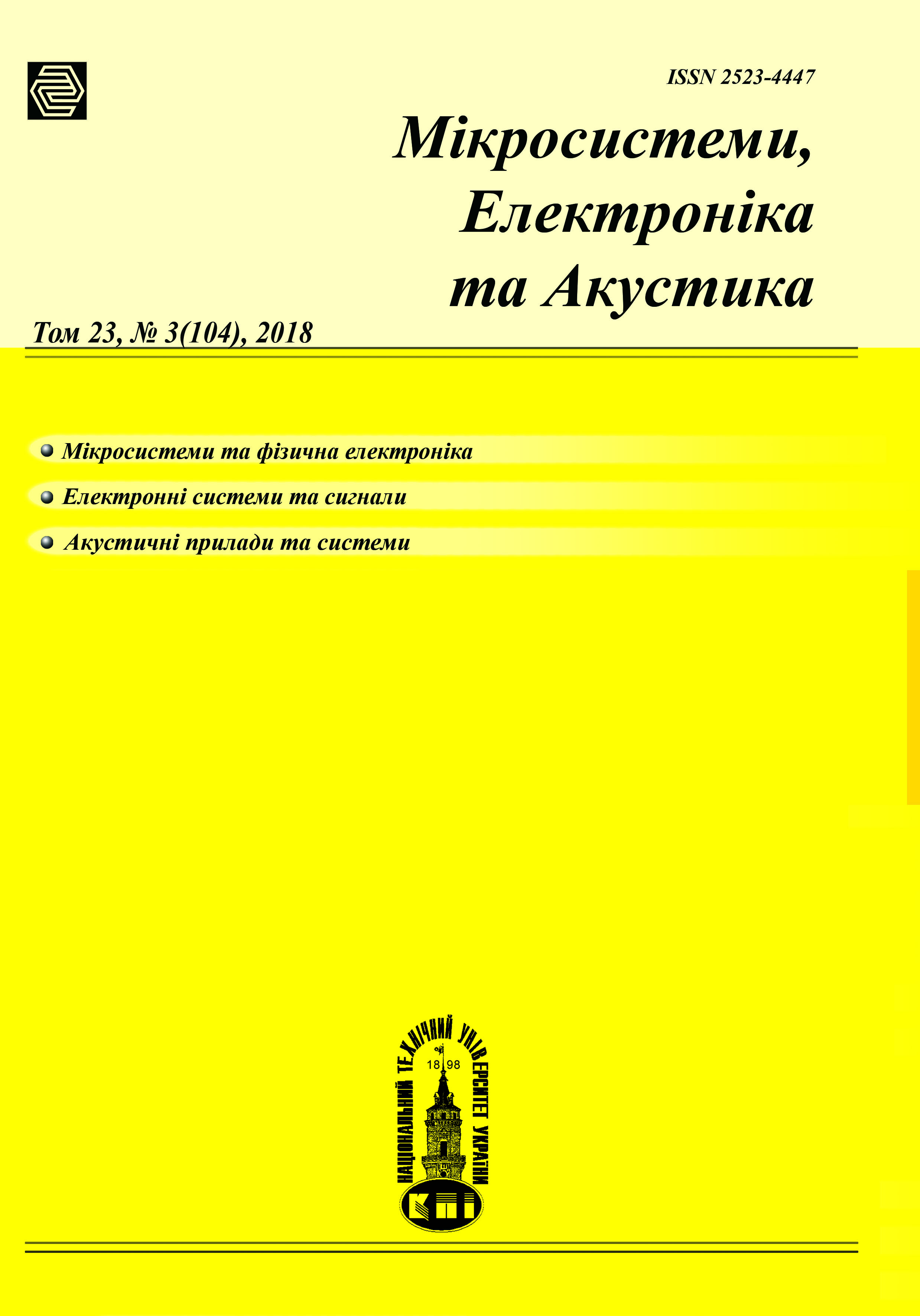Імпедансні характеристики плоско-паралельного акустичного хвилеводу з комбінуванням межами при порушенні його двочастотних сигналом
Основний зміст сторінки статті
Анотація
В роботі розглянуті імпедансні характеристики хвилеводу з комбінованими межами при поширенні в ньому хвильового пакета у вигляді двухчастотного сигналу. Плоско - паралельний хвилевід з комбінованими межами імітує дрібне море з донною поверхнею, представленої акустично жорсткою кордоном, Поверхня розділу середовищ "вода - повітря" - акустично м'яка межа. В результаті рішення задачі визначення питомих акустичних опорів уздовж горизонтального і вздовж вертикального перетину хвилеводу - отримані основні аналітичні вирази, що описують поширення в ньому комбінованих коливань двох різних частот. Для визначення імпедансних характеристик використані середні значення суперпозиций компонент швидкості коливань і тисків, що розвиваються різночастотних коливаннями джерела. Розглянуто питання формування в волноводе розподілів середніх по часового інтервалу спостереження щільності потоків потужності і щільності акустичної енергії.
Метою роботи є визначення особливостей питомих акустичних опорів нормальним хвилям, що поширюються в плоско-паралельному хвилеводу з комбінованими межами, і їх вплив на основні енергетичні характеристики акустичного поля, що збуджується двочастотних джерелом.
В умовах дисперсії, для області нижніх частот і першій моди хвилеводу, розраховані залежності і проаналізовано особливості імпедансних характеристик і їх вплив на розподіл по каналу хвилеводу середніх по часового інтервалу спостереження щільності потоків потужності і щільності акустичної енергії. В роботі показано, що імпеданс хвилеводу вздовж його горизонтальної осі залежить від координати і значень частот вихідного пакета.
Бібл.12, рис. 4
Блок інформації про статтю

Ця робота ліцензується відповідно до Creative Commons Attribution 4.0 International License.
Автори, які публікуються у цьому журналі, погоджуються з наступними умовами:- Автори залишають за собою право на авторство своєї роботи та передають журналу право першої публікації цієї роботи на умовах ліцензії Creative Commons Attribution License, котра дозволяє іншим особам вільно розповсюджувати опубліковану роботу з обов'язковим посиланням на авторів оригінальної роботи та першу публікацію роботи у цьому журналі.
- Автори мають право укладати самостійні додаткові угоди щодо неексклюзивного розповсюдження роботи у тому вигляді, в якому вона була опублікована цим журналом (наприклад, розміщувати роботу в електронному сховищі установи або публікувати у складі монографії), за умови збереження посилання на першу публікацію роботи у цьому журналі.
- Політика журналу дозволяє і заохочує розміщення авторами в мережі Інтернет (наприклад, у сховищах установ або на особистих веб-сайтах) рукопису роботи, як до подання цього рукопису до редакції, так і під час його редакційного опрацювання, оскільки це сприяє виникненню продуктивної наукової дискусії та позитивно позначається на оперативності та динаміці цитування опублікованої роботи (див. The Effect of Open Access).
Посилання
S. M. Rzhevkin, Kurs lektsiy po teorii zvuka [The course of lectures on the theory of sound]. Moscow, USSR: MGU, 1960.
M. A. Isakovich, Obshchaya akustiki [General Acoustics]. Moscow, USSR: Nauka, 1973.
M. I. Karnovsky, Teoriticheskie osnovy gidroakustiki [Theoretical basics of hydroacoustics]. Kyiv, Ukraine: KPI, 1986.
V. T. Grinchenko, I. V. Vovk, and V. T. Matsypura, Osnovyi akustiki [Basics of Acoustics]. Kyiv, Ukraine: IGM NANU, 2009.
V. V. Meleshko, V. T. Matsypura, and I. A. Ulitko, Teoriya volnovodov [Waveguide’s theory]. Kyiv, Ukraine: PCC Kyiv University, 2013.
M. A. Bulanaya, I. V. Vovk, V. T. Grinchenko, and V. T. Matsypura, “Osobennosti rasprostraneniya zvukovogo impul’sa v ploskom regulyarnom volnovode [Peculiarities of the sound pulse propagation in the planar regular waveguide],” Acoust. Bull., vol. 11, no. 4, pp. 9–23, 2008, URL: http://hydromech.org.ua/content/pdf/av/av-11-4(09-23).pdf.
A. O. Bezruchko, V. S. Didkovskyi, M. D. Gladkikh, and O. V. Korzhyk, “Deformatsiya signala s razlichnoy chastotoy impul’snogo koda v podvodnom zvukovom kanale [About deforming multifrequency pulse-coded acoustic signals in the underwater sound channel],” Inf. Process. Syst., no. 10(135), pp. 12–15, 2015, URL: http://www.hups.mil.gov.ua/periodic-app/article/13389.
N. D. Hladkih, O. V. Korzhyk, and V. S. Didkovskyi, “Propagation of sound pulse informational messages in planar wave-guide with ideal boundaries,” Electron. Commun., vol. 21, no. 3, pp. 82–96, Oct. 2016, DOI: 10.20535/2312-1807.2016.21.3.70274.
V. A. Lastovenko and V. A. Lisutin, “Features of vector acoustic fields in a wave waters of the shallow sea,” Zb. Nauk. Pr. Prykladna Fis. i Mat., pp. 192–198, 2014.
Y. I. Papkova, “Pekeris waveguide in the case of an inhomogeneous profile of the sound velocity and absorbing base,” Akust. Visn., vol. 13, no. 3, pp. 42–50, 2010.
O. S. Chaika, M. O. Yaroshenko, and O. V. Korzhyk, “Singular points of vector intensity’s field in waveguide with combine boundaries,” Microsystems, Electron. Acoust., vol. 23, no. 1, pp. 44–51, 2018, DOI: 10.20535/2523-4455.2018.23.1.107853.
G. S. Gorelyk, Kolebaniya i volny [Oscillations and waves]. Moscow, USSR: GI FML, 1959.





